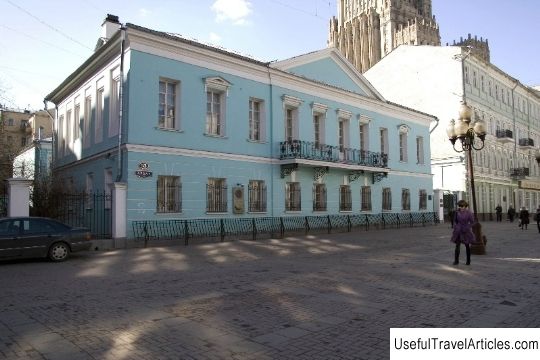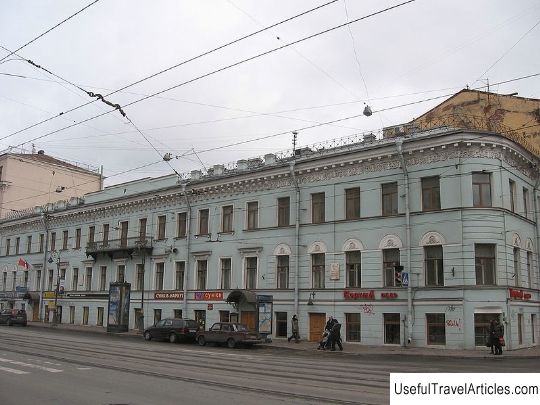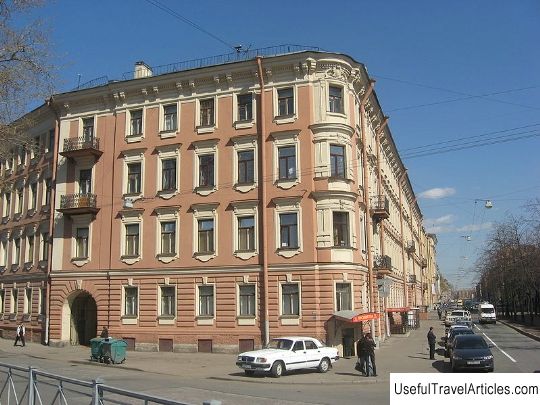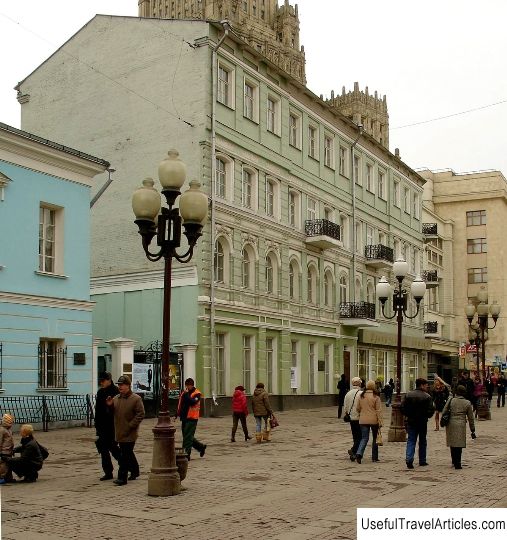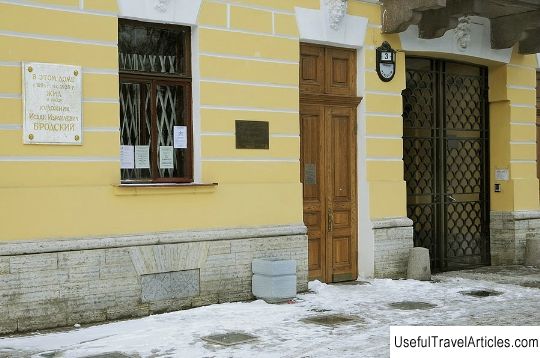Pushkin Museum-Apartment on the Moika River description and photos - Russia - St. Petersburg: St. Petersburg
Rating: 8,0/10 (2590 votes) 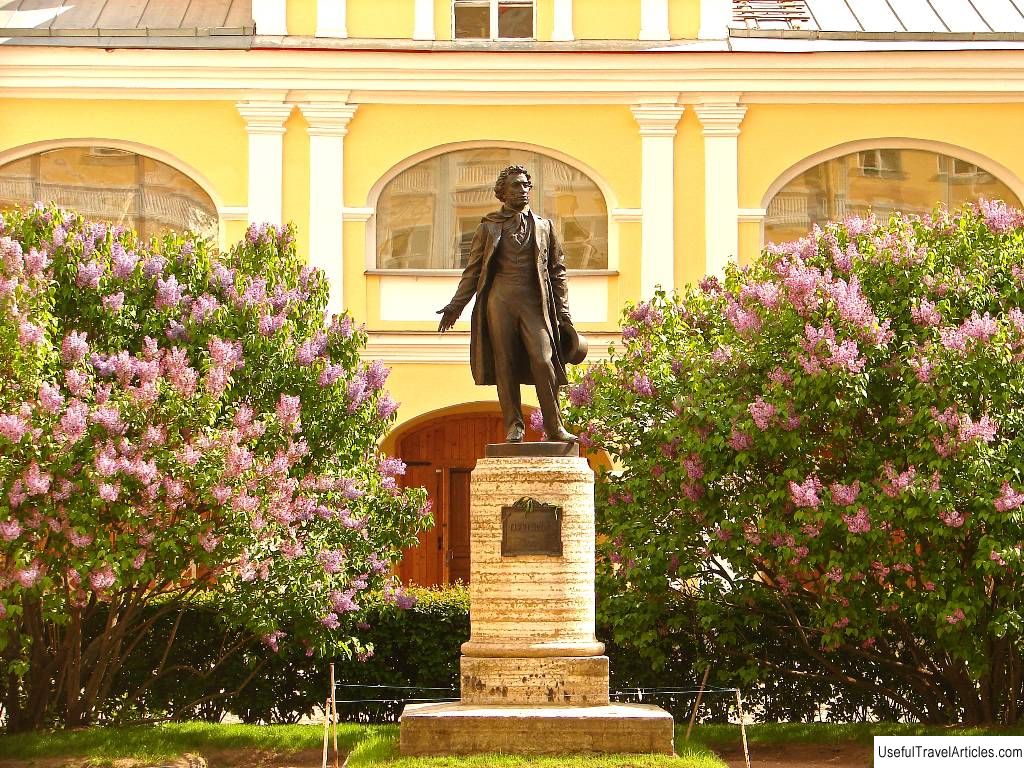
Museum-apartment of Pushkin on the Moika description and photos - Russia - St. Petersburg: St. Petersburg. Detailed information about the attraction. Description, photos and a map showing the nearest significant objects. Photo and descriptionAmong the numerous sights of St. Petersburg, a special place is occupied by the only memorial apartment in the city (more precisely, a museum apartment) of the great Russian poet Alexander Pushkin . It is located in a mansion that once belonged to the princes of Volkonsky . It was here, in the rooms on the first floor, that the poet spent the last few months of his life. In this apartment he died, having received a mortal wound in a duel. History of the MuseumAt the end of the 19th century, in the year of the centenary of the classic of Russian literature, the city administration planned to buy out an old house, where in The poet lived in the 30s of the XIX century. According to these plans, free reading rooms and a school were to be accommodated in the house - in memory of the poet. But this project was never realized. Centenary of the great poet was marked by the fact that a memorial funeral service was served in the apartment he once occupied. In the post-revolutionary period, cultural figures have repeatedly turned to the city administration and other authorities with a request to evict residents from Pushkin's apartment and to open a museum. On the eve of the one hundred and twenty-fifth birthday of the poet , this plan began to be implemented: those who lived in Pushkin's apartment were gradually resettled at other addresses. An estimate was drawn up for the renovation of the apartment, and the search for funds began. Renovation work was carried out in the mid-20s of the XX century. In 1925 in the apartment, in the place where where the infamous sofa used to stand (the poet spent his last hours on it and died), a bust of Pushkin , crowned with a laurel wreath, was installed. Weekly scientific (art history) meetings began to be held in those rooms that during the poet's life were a dining room and a pantry. Two years later, the first museum exposition was opened. It includes more than two hundred paintings and graphic works. There were portraits of the poet and his relatives, as well as some of his other contemporaries; the views of Petersburg of Pushkin's times were also exhibited. On the old clock, which was one of the exhibits, time stood still: it showed the hour when the poet died. Visitors stayed for a long time near the writing table: there was a death mask on it, it was framed with a laurel wreath. The beginning of the 30s became a black page in the history of the museum: its director was arrested and expelled from the city. Admirers of the great poet's work continued to fight for the complete reconstruction of the interior of the memorial apartment. But during that period of time, a detailed reconstruction of its situation was impossible for a number of reasons; moreover, a bust of Joseph Stalin was installed in the museum (of course, it has nothing to do with the rest of the exposition). Almost all the premises were impersonal, they practically did not have anything from the atmosphere of Pushkin's time, although there were exhibits of the museum's historical and literary collection. However, partly the interior of the apartment has been restored. In the poet's office, bookshelves were installed, placed in accordance with the drawings of one of Pushkin's friends: he often visited here and schematically captured the arrangement of rooms and objects. In the second half of the 30s, the same sofa on which the poet spent the last hours of his life was transferred to the museum. In the 60s of the XX century, the reconstruction of the apartment was resumed. But funds were still not enough, so that really large-scale work was not carried out. In the 80s, the premises of the apartment that had not previously belonged to it were transferred to the museum. The reconstruction continued; now it was more detailed, more successful. In the 90s of the XX century the exposition was renewed . It was during that period of time that the museum acquired its final appearance - the one that today's visitors see. Museum exposition The furnishings of the apartment have been recreated on based on a number of historical documents. In the museum, you will see a mahogany table, at which the poet worked, and an unusual armchair that stood in his study. His curl is kept here under glass, it was cut off from the poet's head on the day of his death (at the request of one of his admirers) and is kept in a silver medallion. The exposition includes decorations by Natalia Pushkina and portraits of children. One of the most impressive exhibits in the museum is the poet's death mask . Also in the museum you can see many other things that belonged to both the poet himself and his loved ones. In other rooms of the building, you can see the exposition telling about the history of the house, about the last, tragic period of the life of the great poet and about those the events that led to his death. Let's tell you more about some of the relics in the museum: - Made of mahogany and upholstered in fabric writing table of the poet , according to the memoirs of contemporaries, stood in the middle of the room and was littered with books, various papers and writing accessories. The table entered the museum in the 50s of the XX century. - The armchair of the poet is also made of mahogany (with metal inserts), upholstered in morocco. It was rare enough for the 19th century: from under the seat it was possible to extend the foot cushion, which was unusual. According to the testimony of contemporaries, the poet was very fond of this chair: he preferred to work, sitting in it at his desk. After the death of the owner, the chair was transported by his widow to Mikhailovskoye. In the 80s of the XIX century, it was sketched by one of the visitors to the estate. The drawing has survived to this day. - A leather-covered mahogany sofa occupies a special place among the exhibits of the museum: a poet died on it after receiving a mortal wound. The last hours of his life passed here. In the XXI century, a study was carried out on the surface of this piece of furniture. Traces of blood were found - scanty, even microscopic, but sufficient for analysis. Modern expertise has confirmed that that the sofa really belonged to the classics of Russian literature. - In the museum you can see the black vest that the poet was wearing on the day of the duel. The mortally wounded duelist lost more than two liters of blood on his way home, it soaked his vest and shirt. For a long time this cloth vest was kept in the estate of one of the poet's friends. He placed the relic in a special tabletop display case. Next to the vest there was a church candle from the poet's funeral service and the glove of the owner of the estate himself (he threw the second into Pushkin's coffin, saying goodbye to his friend). The vest was donated to the museum in the late 30s of the XX century. - The museum keeps an unusual inkwell of Pushkin. She is adorned with the figurine of a black man, leaning on an anchor. - A paper-cutting knife is covered with black ink on both sides: the inscriptions were made by the nephew of the poet, to whom Pushkin presented this item. The case for the knife has also survived: it is covered with leather on the outside, and a lining of silk and velvet inside. - According to legend, a black box , which is now part of the museum exhibition, stood on the table in the last apartment of the poet. He kept rings in it. Before his death, he took out one of the rings and presented it to his friend, who was with the poet in the last hours of his life. It was a turquoise ring. - saber , presented to the poet in Arzrum, where he was, in his own words, as either a soldier or a traveler, has been preserved. The saber was presented to him by General Ivan Paskevich , under whose command the classic of Russian literature took part in the operation against the Turkish troops. The saber is forged from Damascus steel, decorated with silver. - In the museum you can see several of the poet's walking sticks . One of them is decorated with amethyst, the head of the other has a button with the monogram of the first Russian emperor (according to legend, this piece of clothing of Peter I was kept by Abram Hannibal, the poet's ancestor). The third cane is decorated with ivory. - The museum exhibits Natalia Pushkina's purse embroidered with beads . There you can also see Pushkin's wallet, which, according to legend, his wife embroidered with beads with her own hand. - Wallet made of silk and morocco, the poet gave to one of his friends. Pushkin believed that this item brought a friend good luck while playing cards. The wallet served its purpose superbly: a friend did win a large sum of money. After that it was decided that the wallet would remain with him. At the end of the 30s of the XX century, this item entered the museum. - A small tray has survived, on which, according to legend, champagne was brought out on the day of the poet's wedding to congratulate the young. - Another interesting exhibit of the museum is a travel device (a decanter, a glass and a tray). It is made of ruby glass and gilded. Brought by the poet from Chisinau in the early 20s of the XIX century.     
We also recommend reading Museum of the sculptor I. Pinzel description and photo - Ukraine: Lviv Topic: Pushkin Museum-Apartment on the Moika River description and photos - Russia - St. Petersburg: St. Petersburg. |
